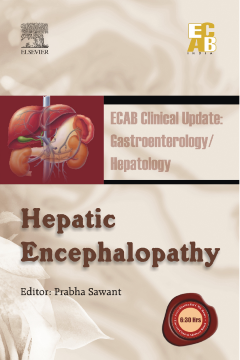
Additional Information
Book Details
Abstract
Hepatic encephalopathy is the clinical syndrome resulting from increased ammonia levels in blood. The most common cause of HE is chronic liver disease. However, acute liver failure, Reye’s syndrome, or metabolic defects are other causes. The true prevalence of overt HE is difficult to establish because of the considerable heterogeneity in etiology and disease severity. However, HE has been reported to be present in around 50% of patients with cirrhosis or with porto-caval shunts at some time during their illness. It is less common in patients with portosystemic shunts without liver disease. Thirty percent of patients dying of end-stage liver disease experience significant encephalopathy, approaching coma. After TIPS placement, approximately 1/3 of patients will experience overt HE.
Minimal HE (MHE) is difficult to diagnose due to lack of standard diagnostic tests. Its clinical significance with regards to progression to overt encephalopathy has however, not been established. Conventional treatment of hepatic encephalopathy relies primarily on reducing the production and absorption of ammonia. Identification and correction of the precipitating factors and general supportive measures are important management steps. There are very few randomized controlled trials (RCT) of therapies and even these are bugged by lack of a control group and small sample sizes.
